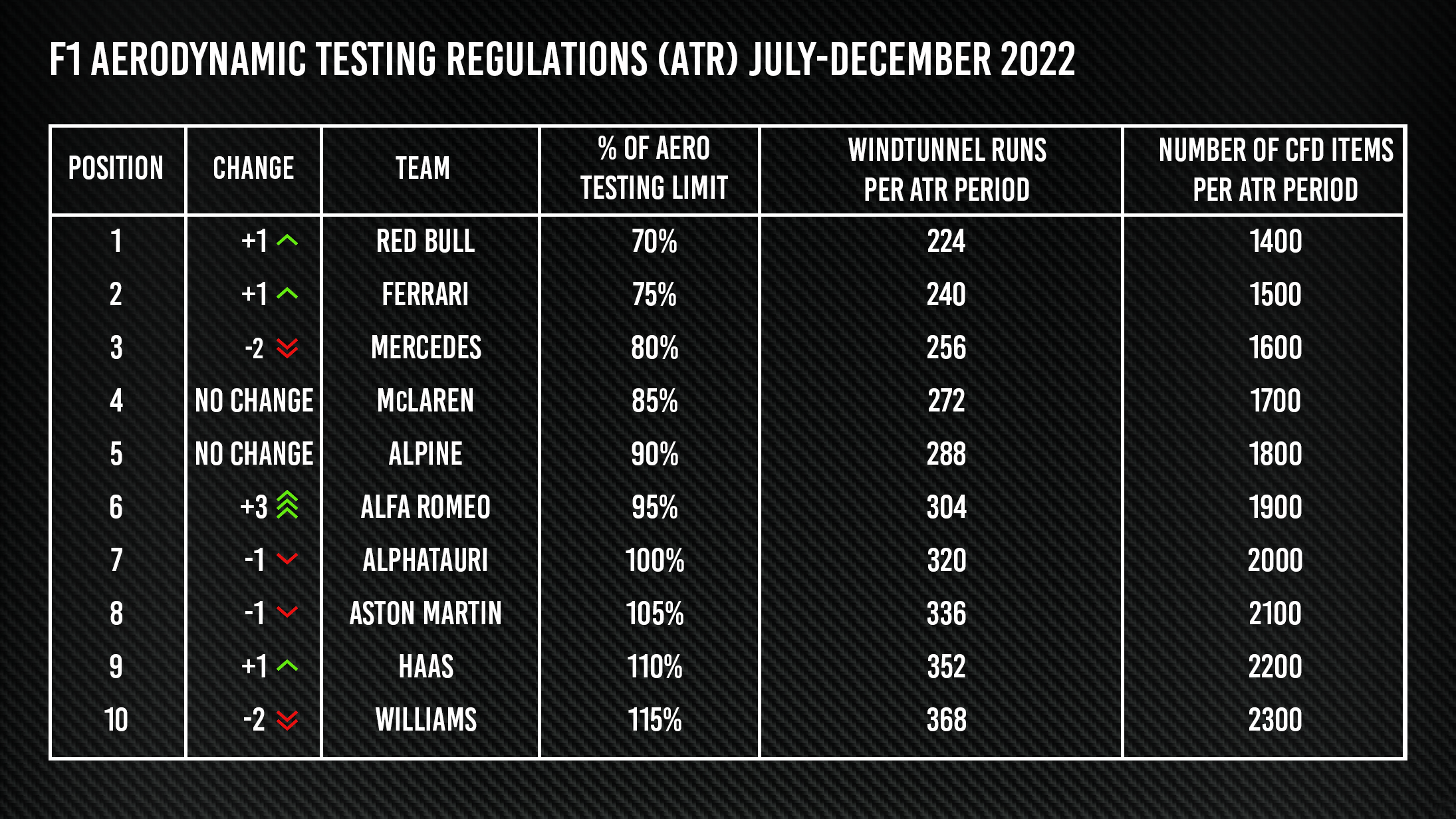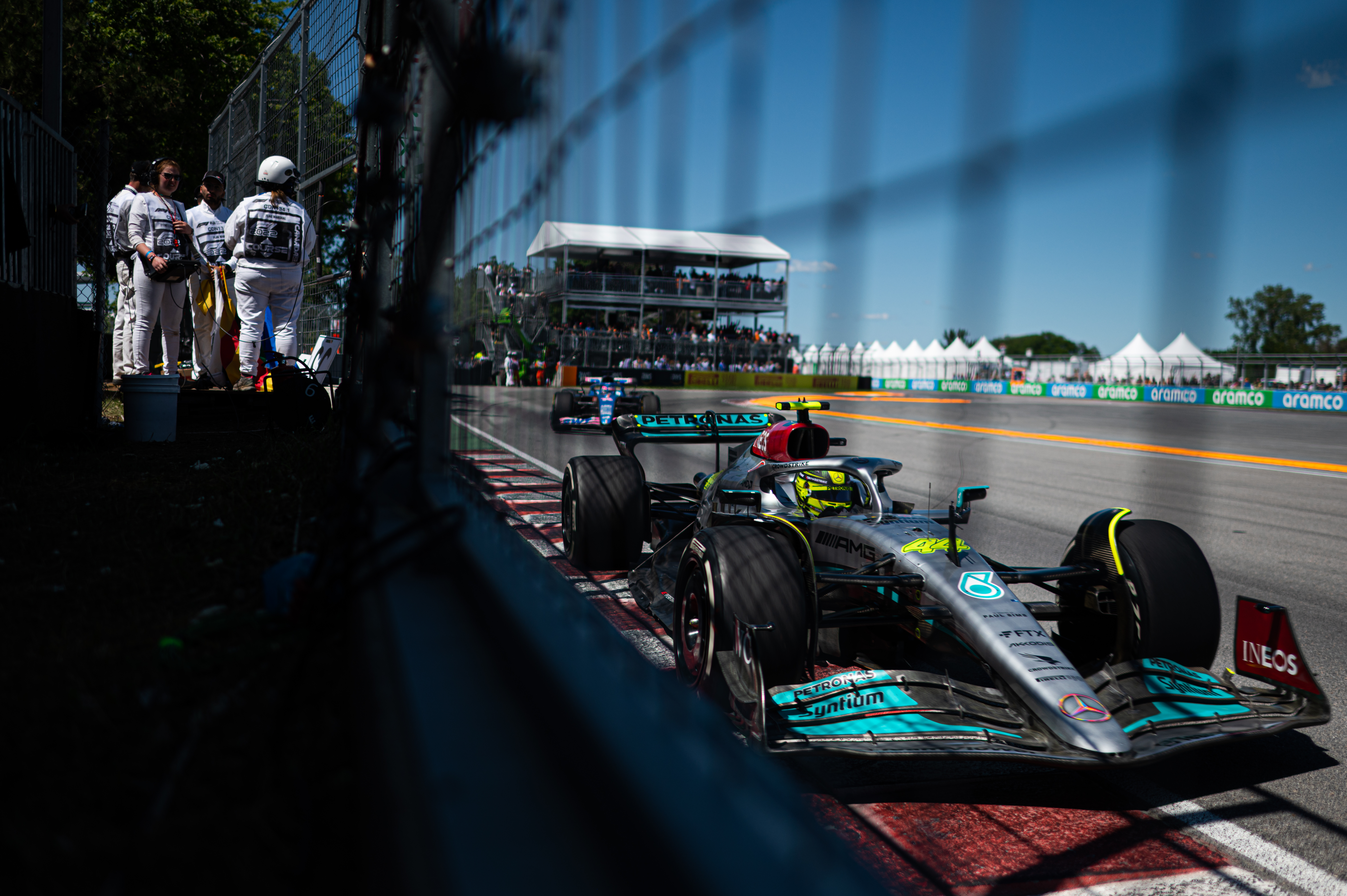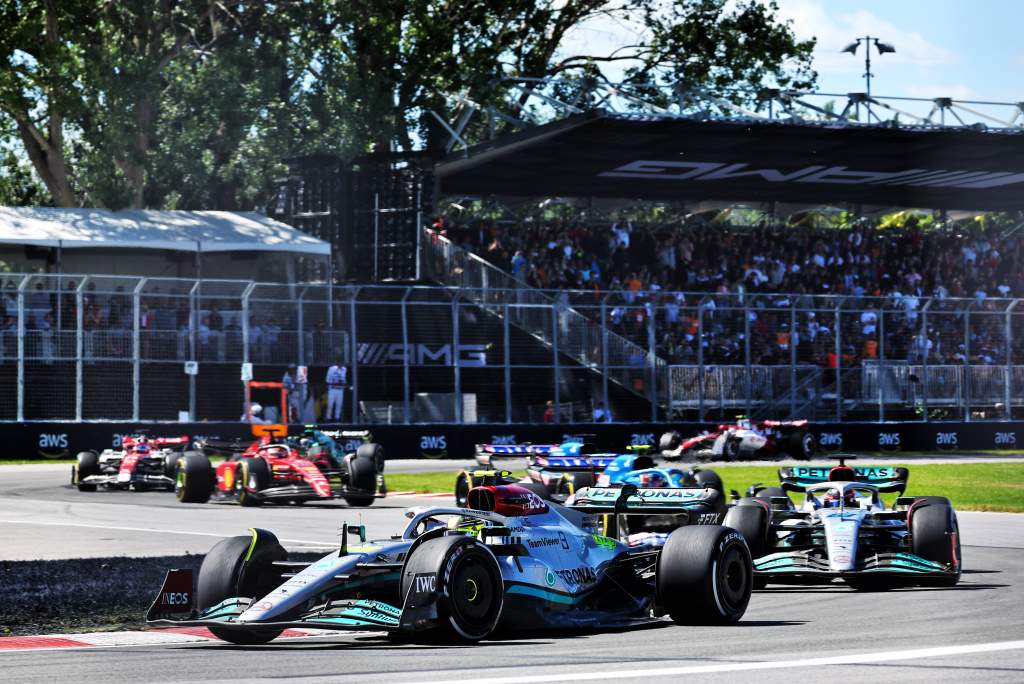Up Next

Mercedes is, along with Williams, the biggest gainer from the reset of Formula 1’s aerodynamic testing restrictions for the second half of the year.
Mercedes and Williams are two places lower in the constructors’ championship at the midway point of the 2022 season than at the end of the last campaign.
This means Mercedes moves from 70% of the aerodynamic testing limits governing windtunnel and CFD use for the first half of the year to 80% for the second. This is based on the ATR rules set out in Appendix 7 of the sporting regulations.

The ATR is a handicap system designed to limit the windtunnel and CFD testing of the most successful teams compared to those that are less successful. Each team is given a certain allocation of the nominal allowance based on constructors’ championship position, in 5% increments.
The year is split into six aerodynamic testing periods, three in the first half of the year and three in the second. The fourth period kicks off at the start of July, with the allocations reset based on constructors’ championship position on June 30.
As that is before the next race of the season at Silverstone, the constructors’ championship positions at the end of last weekend’s Canadian Grand Prix are used for the reset.
While Mercedes gains, title rivals Red Bull and Ferrari get a reduced allocation. They are both one place higher in the championship than they were at the end of last year and drop by one 5% step.
At the other end of the table, Williams has dropped from eighth in last year’s standings to its current 10th, meaning it goes from 105% of the allocation to 115%.
AlphaTauri and Aston Martin also gain by one 5% increment thanks to being one place lower in the standings now than they were at the end of last year.

Aston Martin was set to gain double that prior to Canada, but Lance Stroll’s point for 10th moved it ahead of Haas into eighth in the standings.
The team suffering the biggest loss in terms of aero testing is Alfa Romeo. It was ninth in last year’s championship but is currently sixth, meaning it will be on 95% of the aero testing allowance for the second half of the year compared to 110% for the first half.
Haas is also one place higher in the standings, meaning it drops by one 5% step having been shuffled down to ninth in the constructors’ championship in Canada.
It’s difficult to quantify what effect this has on teams’ development, but it stands to reason that those with more windtunnel time and CFD items have greater potential to make gains.
With teams in the second half of the year trading off ongoing 2022-car development with ’23 work, the readjustment of the allocations makes enough of a difference to have an impact on the relative performance of the cars – particularly next season.

The ATR was first introduced last year with 2.5% increments between the teams. This year, those steps increased to 5%, with the mechanism designed to be a gentle, but effective, way to give teams doing less well the opportunity to make bigger gains.
And while having 80% rather than 70% of the allowed windtunnel running and CFD items won’t make up for the pain of the struggles Mercedes has endured, it does give it a little more opportunity to research its problems from July onwards.
The ATR allowances will be reset for January 2023 based on the end-of-season constructors’ championship standings.




